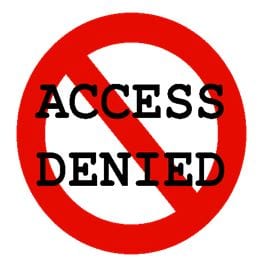It’s been a while since I blogged about digital inclusion. In the meantime the Government Digital Service team have produced a checklist stating ‘if we do these things, we’re doing digital inclusion’. Looks like they’re starting out all over again. Excuse me while I yawn. Honestly we’ve been here before and nothing – yet – has changed.
It’s January 2014. All that’s happened since the Digital Britain report is the internet has become more inaccessible, assistive technology more expensive and digital exclusion increasingly invisible and silenced. The GDS checklist appears positive and realistic. I have genuine hope this may signify change.
- Services need to be built for the user, not government or business
- Provide simple, low cost options for those socially and economically excluded
- Bring digital into people’s lives in a way that benefits them
- Make it easier to stay safe – online safety is a basic digital literacy skill
- Better coordination between public, private and voluntary sectors
- Reducing digital exclusion is not about the number of people who log-on once
Words are easy and if they’re digital too, you need to be online to comment. The government has a ‘digital first’ policy with regard to public information. Do they not see the irony? There’s no mention of disability in the checklist and when Leonie Watson points this is out, the response is a link to a post from August 2013 titled Meet the Assisted Digital Team with the comment: ‘We’ll get down to the detail on assisting all sorts of disabilities soon. But at this stage all any inclusion tries to do is have (design) principles which apply to every citizen. How they are applied, and to whom, will always depend on particular departments.’ [my emphasis]
Already there are signs this new (and yet another) digital inclusion initiative will fall apart. In 2009 the Consumer Expert Group reported on the Use of the Internet by disabled people: barriers and solutions. The research is out there. It isn’t rocket science. If you are already socially and economically excluded you are likely to be digitally excluded as well. The checklist recognises this but so did the Labour government a decade ago. What is less well publicised is the two-way nature of digital access. It’s as much about the inclusive design and development of the internet as it is about the individual hardware and software required to get online in the first place. I can see a situation like the processed food industry which continues to produce low cost high sugar/fat/additive junk while the government makes comments about individual responsibility to make healthy choices – as if it were that easy. Equality of internet access? Just be more responsible about the sites you choose – go for the ones with inclusive design – they’re better for you.
Tim Berners Lee dreamed about democracy of access. ‘The power of the Web is in its universality. Access by everyone regardless of disability is an essential aspect.’ * Before Microsoft Windows came along there was a distinct chance this might have happened but progress has gone backwards ever since. Whether this latest initiative will make any difference remains to be seen. Somehow – sadly – I doubt it.
————————————————————————————————————————
